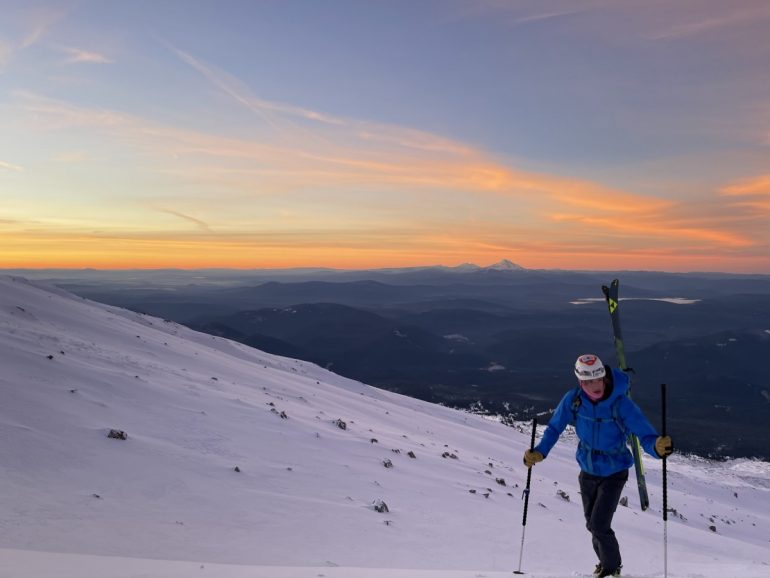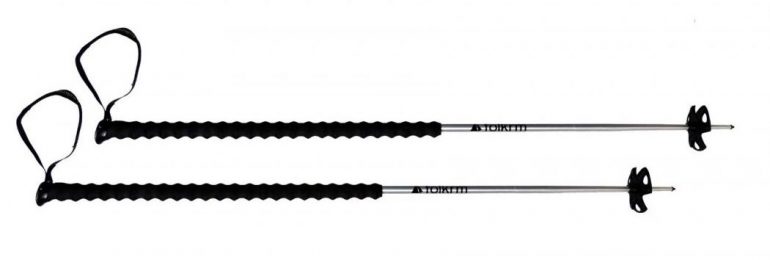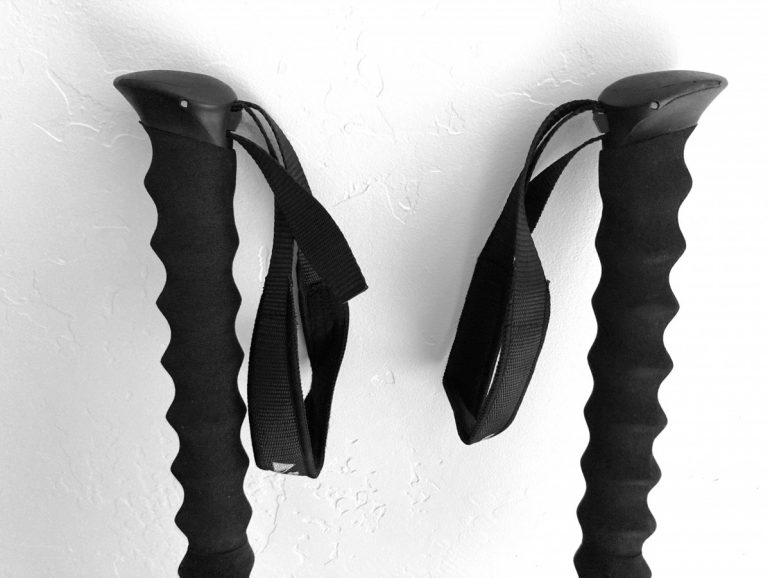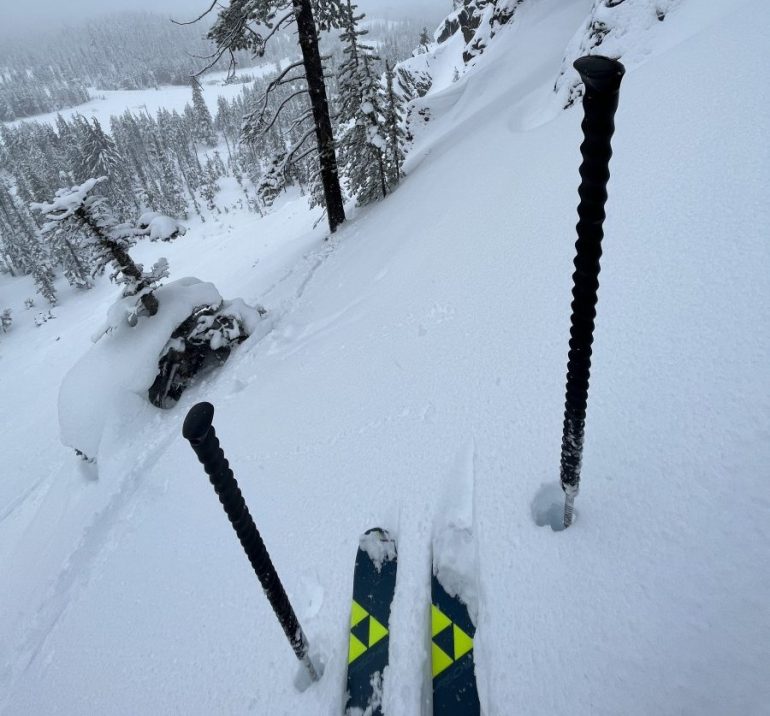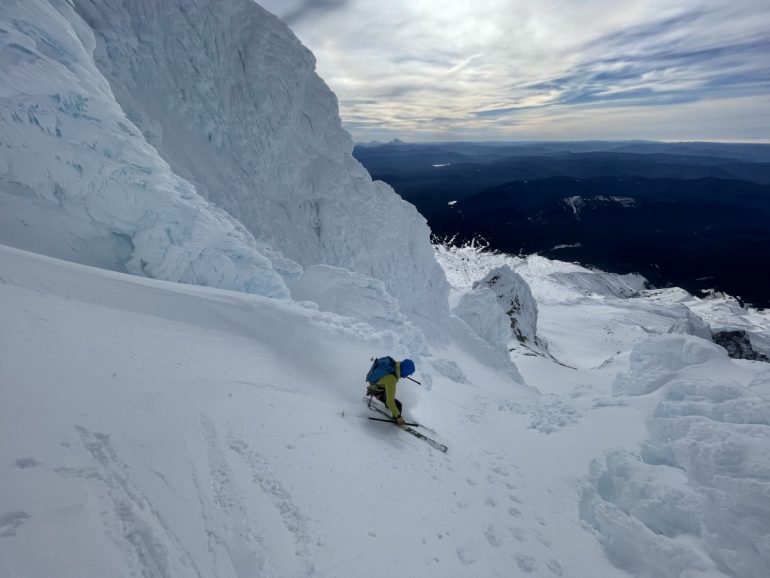Blah, blah, blah. I can hear my dad telling me how it was back in the day. I’m not talking some story along the lines of walking uphill both ways to school, but it might as well be.
Thank you, mom and dad, for the sweet gear. It is sweet. But one more time about the Ramer ski poles, their clunky adjustability, and how rough you had it…yawn.
In my relatively short life, working on 19 trips around the sun, I’ve had some hand-me-downs and some new ski poles. All pretty much the same functional design and all Black Diamond. Two aluminum shafts nested together, a grip up top, basket below, and a “flick-lock” to adjust the length. Add in a rubberized piece wrapping the shaft below the main grip for more hand adjustability on the skin track, and there you have it; a basic, functional, backcountry ski pole.
From Ramer’s breakthroughs (that work for you, dad?) to today’s carbon fiber shafted poles, the ski pole still serves the same essential function – it helps with balance as we ski and move more efficiently while striding. But we know it does a whole lot more.
A few years ago, we began seeing those long-gripped and snazzy-colored Les Batons d’Alain ski poles from Chamonix here in the States.
We now think of this pole style as a “baton pole”. This type of pole wasn’t precisely a retro-movement, but it certainly was a simple rethink of a non-adjustable shaft, a simple basket, and a long foam grip extending nearly two-thirds of the pole length. No moving or sliding parts to fail.
Folkrm is a small company out of Hood River, Oregon. For now, they are a single product company fabricating a baton-style ski pole called the Wyeast – named after the skiable face on Mount Hood.
The Wyeast poles come in fixed lengths – to be clear, they are not adjustable like your average ski touring pole. Lengths available are 115cm, 125cm, and 135cm. The shafts are made from aircraft-grade 7075 aluminum alloy, while the grips are a dense and grippable foam the company claims will biodegrade in some landfills (biologically active landfills.)
The 135cm length weighs 245grams with straps.
No lie here, I love baton-style poles, and the Wyeast is part of this love story. The most compelling aspect of the Wyeast is that you slide your hand up and down the grip for efficiency over varied terrain instead of taking the time to readjust each pole to match the proper length every time the terrain changes. For example, on steep switchbacks, say up our local Tower couloir; it can be a zigzaggy skin track. You switch directions every five to 10 strides. Using the Wyeast on skin tracks like this, there’s no need to swap the left pole to the right, or vice versa, to make sure the shorter pole is in your uphill hand. When changing direction, it’s a seamless transition; you choke up or down on the pole.
This brings up the words I spoke when I first saw the Folkrms: “That’s a lot of foam grip.” As I mentioned, the foam grip extends a whole lot of the pole. I’m 6’4″ and use the 135cm fixed-length model. The foam grip covers from just below the top of the grip (which is hardened rubber) down for about 86cm of coverage (roughly 63% of the pole’s length). What that provides is a wide range of adjustments.
And the rubberized top, when plunging the pole top-down while booting, easily penetrates firm snow. (The top has also proved functional to flip risers.) But, for now, I cannot answer how durable the foam grips are after plunging the pole top-down for an entire ski season.
The elongated foam grip, which is oblong and not round, seems to be sized for most adult human hands, meaning the grip is not too skinny. On other models of adjustable two-part ski poles, once I’m using the rubberized grip (affixed below the main grip) to choke up on the pole, I tend to overgrip, as this portion of grip has a smaller diameter than the main grip. The Wyeast’s grip maintains a consistent diameter throughout. The foam is molded in what looks like a sinusoidal pattern – I find my fingers rest nicely in the troughs.
The name Folkrm is clever in this instance. Many of us think of a see-saw’s fulcrum when the word comes up—that perfect balance point on which a see-saw pivots. There are many possible pivot points as your hand can move up and down the Wyeast pole. These poles feel lightweight overall; their swing weight is smooth and unburdened.
I’m not timing myself, but a baton-style pole feels more efficient. I’m simply fiddling less with my ski poles, and they ski great.
Often during late spring in my home range, we can skate ski into some ski lines on frozen corn and skate ski out on the refreeze. I have not tested thoroughly how well the Wyeast pole performs while skating with lightweight gear. I like a long ski pole for skating, and adjustable ski poles help accommodate that.
The other aspect of fixed length poles is they are not stowable at a reduced length. That’s not a significant concern for me, but I know it matters to some. But certainly, a two or three-segmented pole could reduce to a smaller, more stowable size. However, I brought the 135cm Wyeast with me as I climbed a route on Mt Hood’s Reid Headwall and then descended a different route on skis. I strapped the poles against my skis on my pack, and they remained out of the way, even while ascending more technical ground.
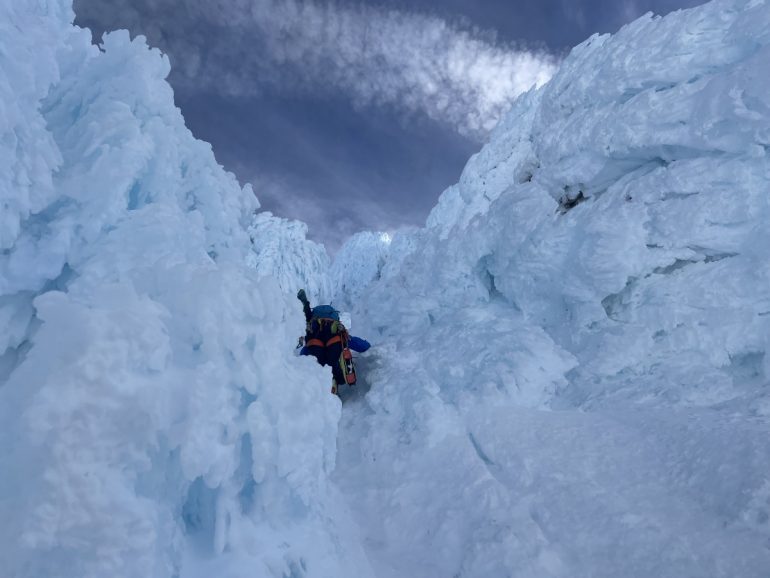
Although a fixed length, the 135cm Wyeast was tidy enough strapped up against the skis for some more technical ground on the Reid Headwall, Mt. Hood. Photo: Forrest Reinhart.
After pounding on these poles for two months, they are simple and intuitively designed to help maximize efficiency and ease of use. They also seem durable for any backcountry excursion.
The Wyeast comes in a few colors and can be had for $110.00. The straps and baskets are replaceable.
Buy Folkrm Wyeast poles.
Aidan Whitelaw is a student at Montana State University and thanks his parents daily, just because.
Aidan is a student at Montana State University and thanks his parents daily, just because.

